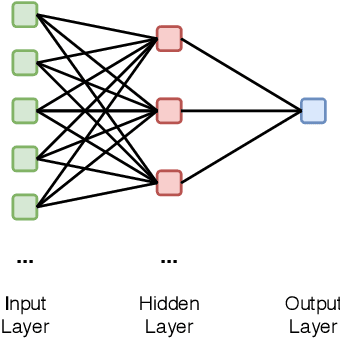J. Walker Orr
Automatic Assessment of the Design Quality of Python Programs with Personalized Feedback
Jun 02, 2021


Abstract:The assessment of program functionality can generally be accomplished with straight-forward unit tests. However, assessing the design quality of a program is a much more difficult and nuanced problem. Design quality is an important consideration since it affects the readability and maintainability of programs. Assessing design quality and giving personalized feedback is very time consuming task for instructors and teaching assistants. This limits the scale of giving personalized feedback to small class settings. Further, design quality is nuanced and is difficult to concisely express as a set of rules. For these reasons, we propose a neural network model to both automatically assess the design of a program and provide personalized feedback to guide students on how to make corrections. The model's effectiveness is evaluated on a corpus of student programs written in Python. The model has an accuracy rate from 83.67% to 94.27%, depending on the dataset, when predicting design scores as compared to historical instructor assessment. Finally, we present a study where students tried to improve the design of their programs based on the personalized feedback produced by the model. Students who participated in the study improved their program design scores by 19.58%.
Learning Scripts as Hidden Markov Models
Sep 11, 2018


Abstract:Scripts have been proposed to model the stereotypical event sequences found in narratives. They can be applied to make a variety of inferences including filling gaps in the narratives and resolving ambiguous references. This paper proposes the first formal framework for scripts based on Hidden Markov Models (HMMs). Our framework supports robust inference and learning algorithms, which are lacking in previous clustering models. We develop an algorithm for structure and parameter learning based on Expectation Maximization and evaluate it on a number of natural datasets. The results show that our algorithm is superior to several informed baselines for predicting missing events in partial observation sequences.
Event Detection with Neural Networks: A Rigorous Empirical Evaluation
Aug 26, 2018



Abstract:Detecting events and classifying them into predefined types is an important step in knowledge extraction from natural language texts. While the neural network models have generally led the state-of-the-art, the differences in performance between different architectures have not been rigorously studied. In this paper we present a novel GRU-based model that combines syntactic information along with temporal structure through an attention mechanism. We show that it is competitive with other neural network architectures through empirical evaluations under different random initializations and training-validation-test splits of ACE2005 dataset.
 Add to Chrome
Add to Chrome Add to Firefox
Add to Firefox Add to Edge
Add to Edge